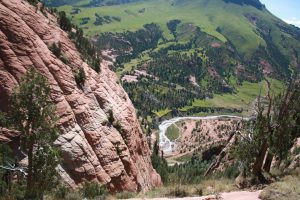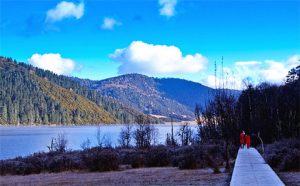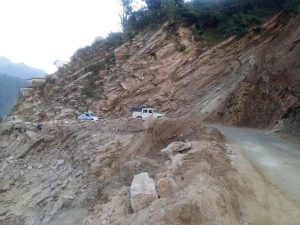From the heights of the Qinghai-Tibetan plateau to the foot of the Great Wall outside Beijing, China is trialling operations at 10 new national parks, which will officially come into being in 2020.
These much-loved locations will be the showcase for China’s “ecological civilisation”, the government’s vision for a sustainable relationship with the environment.
On September 26, the Party’s General Office and the State Council – China’s highest level of decision-making bodies – published the Overall Programme for Construction of a National Park System.
While the plans still lack detail, they show that that the management of national parks and nature reserves is in for a major overhaul.
Park boundaries redrawn
China abounds with national parks, including national forestry parks, national geology parks, national wetland parks and national marine parks that are all overseen by different bodies.
Tang Fanglin, director of the State Forestry Administration’s Kunming Survey and Design Institute, said that a new dedicated body will take the lead in creating a national park standard and oversee their management.
This means that existing parks that meet the standard will be absorbed into the new system, while others will have to be redesignated.
Tang explained that national parks represent the nation, so high standards must be maintained because too many parks, or parks of a low standard (these standards have yet to be defined), would reflect poorly on the country. “We’ve carried out an initial review to identify places suitable for national park status and estimate that there will be no more than 100.”
Yang Rui, a professor of landscape architecture at Tsinghua University, said that some of the national parks designated by provincial governments or government agencies are of little benefit to either the environment or the public. They exist principally to make money through tickets sales to tourists.
He thinks national parks would be better run by central government, rather than lower levels of government. However, it’s still unclear how exactly the national park management body will function.
Protection before tourism
China’s official national parks should be responsible primarily for the protection of valuable landscapes, and authentic and complete ecosystems, according to International Union for the Conservation of Nature (IUCN), a global body that focuses on natural conservation.
The changes do not bar commercial activity from within the park but where this occurs it must not conflict with park functions, such as scientific research, education and leisure. Existing mines and industry will be closed and development will be banned. The new national parks will come under “redline” management, which supposedly grants stricter protections.
These changes are designed to address the damage caused by commercial activities such as mining and development that have continued for years in many nature reserves. Although reserves covering 20% of China’s land area have been established by various levels of government, a lack of coordination has compromised environmental protection within them.
The Qilianshan National Nature Reserve, for example, was criticised this year by both the Party Central Committee and the State Council for excessive commercial activity. There were 52 illegal mining operations there.
Peng Kui, programme manager of the Ecological Conservation and Community Development Programme at the Global Environment Institute, said it’ll take time before a balance emerges between the principle of “strictest protection” and pressures for economic development and tourism.
And while national parks will be run in the public interest, it’s still unclear whether this will mean a reduction in the much-criticised high entry costs. Back in 2014, for example, the National Development and Reform Commission (NRDC) designated Zhangjiajie in Hunan province a candidate for national park status but the requirement for lower entry prices meant the park was not keen.
There is also concern that lower ticket prices may increase tourist numbers to unsustainable levels, limiting tourism in the face of high demand could lead to park staff and touts manipulating prices.
Managing park residents
Alongside tourism, another key issue is managing the need for conservation with the communities of people that already live in the parks.
The proposal indicates that a tailored approach will be taken. Those in key conservation areas likely to be moved elsewhere, while people dispersed around the parks may be gathered in concentrated settlements.
Peng Kui notes that national parks are already home to many people, who are often an integral part of the park, too.
Whilst the thorny issue of relocation is left largely unaddressed, Peng does think that the proposal for “community management systems” is a major step forward. These will encourage residents to sign conservation agreements, and involve them in the establishment and running of the national parks.
Reallocation of land and resources
The natural resources in China’s trial national parks, including the forests, mountains and grasslands, are currently owned by the central and provincial governments. But this is set to change. At some undefined point, ownership will be transferred solely to the central government.
With the state taking possession of collective lands, it is expected that current landowners will sign leases to continue their tenure under the management of the new national parks body. The government has committed to a full consultation with current landowners.
The transfer of resources from local to central government, without any direct compensation or benefit, is expected to cause conflict between central and provincial government. Although the proposal includes an improved mechanism for ecological compensation, it does not say who will benefit it.
Reserves still protected
Tang Fanglin told chinadialogue that the national parks system isn’t just about the creation of new parks – it will be a system for managing both the parks and the nature reserves, the latter being run by state or provincial forestry administrations.
This means that other forms of nature reserve won’t be replaced by the new system; forestry, wetland, and geological parks will all have continued protection.
Ten years ago, Dr Xie Yan, China chair of the IUCN World Commission on Protected Areas, proposed using “nature reserve” as a single term for all China’s natural protected areas.
She said she was “excited” by the government’s proposal, which is “very suitable for China’s circumstances.”
She said that key aspects of the nature reserve law Dr Xie Yan and colleagues promoted in 2012-2013 are to be found in the new proposal, such as strong protections, centralised management, and great state investment.









